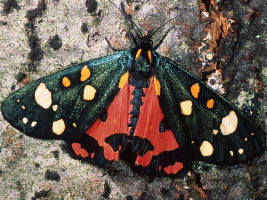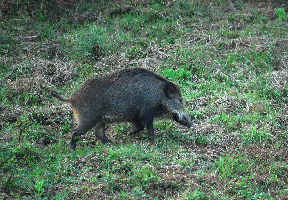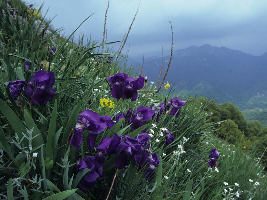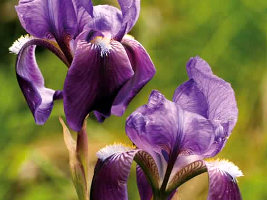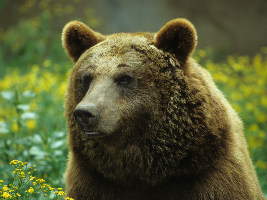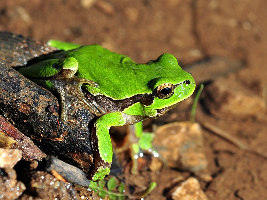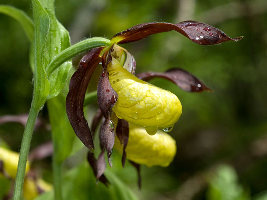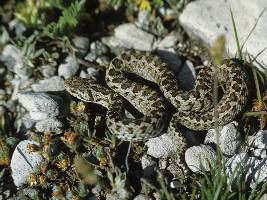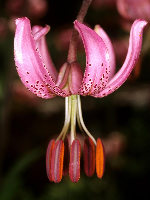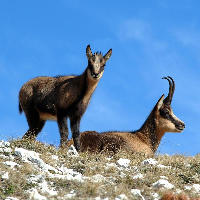Abruzzo, with three National Parks, the Regional Park Sirente-Velino and more than thirty regional Natural Reserves which, taken together, account for over a third of the region, it is rightly called the Greenest Region in Europe. Within several protected areas, scattered not only on the Apennine ridge, but also on the fertile hills of the hinterland and along the one hundred and thirty kilometers of coastline, it is kept more than 75% of plant and animal species in the European continent.
The National Park of Abruzzo, Lazio and Molise
Gran Sasso e Monti della Laga National Park
The Maiella National Park
The Sirente-Velino Regional Park
Established in 1923, it is the oldest National Park and the famous and largest protected area in Italy. With a territorial extension of 50,000 hectares, with about 80.000 hectares of buffer zone, the park includes 25 municipalities in the provinces of L'Aquila (Abruzzo), Frosinone (Lazio) and Isernia (Molise), with about 24.000 people living in the area. The economy of the area is based mainly on tourism, due to the importance of natural resources and many facilities created by the Park.
Agriculture, livestock breeding, pastoral activities and craftsmanship are also important in this integrated economy that combines traditions and innovation. The flora of the Park is very rich, so it has always been worth studying. More than 2000 different species of higher plants have been listed, without mentioning moss, mushrooms, lichens and algae. Many of them are endemic, rare or endangered. And is one of the few areas of Western Europe where you can still find animals like the wolf, the golden eagle, the deer, the Marsican brown bear, the chamois of Abruzzo and the lynx. Today the Park houses a great variety of animals: 60 species of mammals, 300 of birds, 40 of reptiles, amphibians, and fish, and several species of insects including important endemic species. Almost 60% of the Park territory is covered by woods.
Established in 1991 the Park is one of the largest protected areas in Europe, in a predominantly mountainous terrain, including the massif of the Gran Sasso of Italy and Monti della Laga, the showpiece being the massif of Gran Sasso, which dominates the surrounding landscape; it rises vertically on the immense pastures of Campo Imperatore. The Park covers a territory of 150,000 hectares in the provinces of L'Aquila, Teramo and Pescara in Abruzzo, Rieti (Lazio), and Ascoli Piceno (Marche). It is an area rich in forests, springs, waterfalls, prairies, highlands, and vertiginous crests and rock faces. There are 43 villages inside the Park, tiny towns with close-knit stone and brick houses, joined by the rise and fall of narrow lanes. Each village deserves exploration to discover genuine traditions, wonderful regional products and meet the real people of Abruzzo. Almost all of the park's inland settlements date back to at least the Middle Ages but many are older, fonded in the Italic-Roman period.
The Park contains one of the most biologically diverse areas of Europe. The flora of the park is extremely varied depending on the area. In fact, about 2300 superior plant species, that is more than one third of Italy's floristic heritage, live in the Park. The most precious floristic component is linked to high altitude environments, where "glacial relicts" and endemic plants still live. The Gran Sasso is characterized, especially on the L'Aquila side, by its extensive pastures, while Monti della Laga are mainly covered by forests. The animal representing the symbol of the Park is the Apennine chamois, that until the last century had its stronghold in the Gran Sasso. In the Park live other large herbivores such as red deer and roe deer, and their main predator, the Apennine wolf, which is reconstituting small herds. The marten, the wildcat, the badger, the beech marten, the European polecat, and the crested porcupine are other inhabitants of the park; and in the high altitude lives the European snow vole, a small rodent survived since the last glaciation. And also the brown bear Marsicano has sporadic appearances.
The Park contains one of the most biologically diverse areas of Europe. The flora of the park is extremely varied depending on the area. In fact, about 2300 superior plant species, that is more than one third of Italy's floristic heritage, live in the Park. The most precious floristic component is linked to high altitude environments, where "glacial relicts" and endemic plants still live. The Gran Sasso is characterized, especially on the L'Aquila side, by its extensive pastures, while Monti della Laga are mainly covered by forests. The animal representing the symbol of the Park is the Apennine chamois, that until the last century had its stronghold in the Gran Sasso. In the Park live other large herbivores such as red deer and roe deer, and their main predator, the Apennine wolf, which is reconstituting small herds. The marten, the wildcat, the badger, the beech marten, the European polecat, and the crested porcupine are other inhabitants of the park; and in the high altitude lives the European snow vole, a small rodent survived since the last glaciation. And also the brown bear Marsicano has sporadic appearances.
Established in 1991, with a territorial extension of 74,095 hectares, the park includes 39 municipalities in the provinces of L'Aquila, Chieti and Pescara. It's a park that encloses vast areas with peculiar wilderness aspects of European and global significance. The park contains about 500 kilometres of hiking trails through the mountains, cave paintings in Grotta Sant'Angelo and Grotta del Cavallone (the latter being one of the deepest caves in Europe open to the public). The beautiful Majella National Park encircles the mountain massif of Monte Amaro, which at 2793 m, is the second highest peak in the Apennine range. Alpine meadows and beech forests give way to higher sections of the massif of desert landscape, with perpetual snow in some areas. Mountain streams tumble down deep gorges and hidden valleys, where secluded rock hermitages from the Middle Ages can be found. The deep, lush and unspoiled water filled canyons that characterize certain areas of the park are considered a real Eden for nature lovers. Forests cover about 39% of the total area of the Park. The flora of the park is characterized by its considerable wealth and also significant for its originality. The number of endemic plants amounts to 142, and of these, 5 are exclusive of the protected area. Species and subspecies surveyed in the park are 2100, which corresponds to more than 65% to flora from Abruzzo, almost 30% Italian and 17% European. The Park is home to deer, chamois, wild boar, wolves, otters, and a very small number of bears. The region’s agriculture is traditionally pastoral. Rich nature, old traditions, ancient villages, hermitages and archeological findings are other attractions offered by the Park to its visitors. Summer is the best season to walk along the paths and October is enchanting with its multicolored beech woods.
The Sirente-Velino Regional Park was established by the Abruzzo region in 1989, covers an area of over 50,000 hectares and includes 22 municipalities in the Province of L'Aquila. The protected area is characterized by the presence of two majestic mountain ranges: Monte Velino to the west (2487 m, the third highest peak of the Apennines), on the border with Lazio, and Mount Sirente to the east (2349 m). In the Sirente-Velino Park, in the municipality of San Demetrio nor Vestini, are the famous caves of Stiffe, caused by the karst nature of the territory and characterized by the presence of an underground river fed by the water coming from the Rocche, through a sinkhole located at 1350 m. above sea level. Inside on the caves we are amazed by the presence of stalactites, stalagmites, small lakes and thundering waterfalls, up to a few tens of meters. The Park is significantly diversified by the topography of the territory and by the type of environments that host a wide variety of plant and animal species. There are 1570 plant species surveyed and the protected area of the park is home to about 46% of the mammal species on the Italian territory, including some endemic species at risk of extinction as the brown bear Marsicano and the Apennine Wolf, 32% of breeding birds in Italy, 17% of reptiles and 30% of amphibians.
